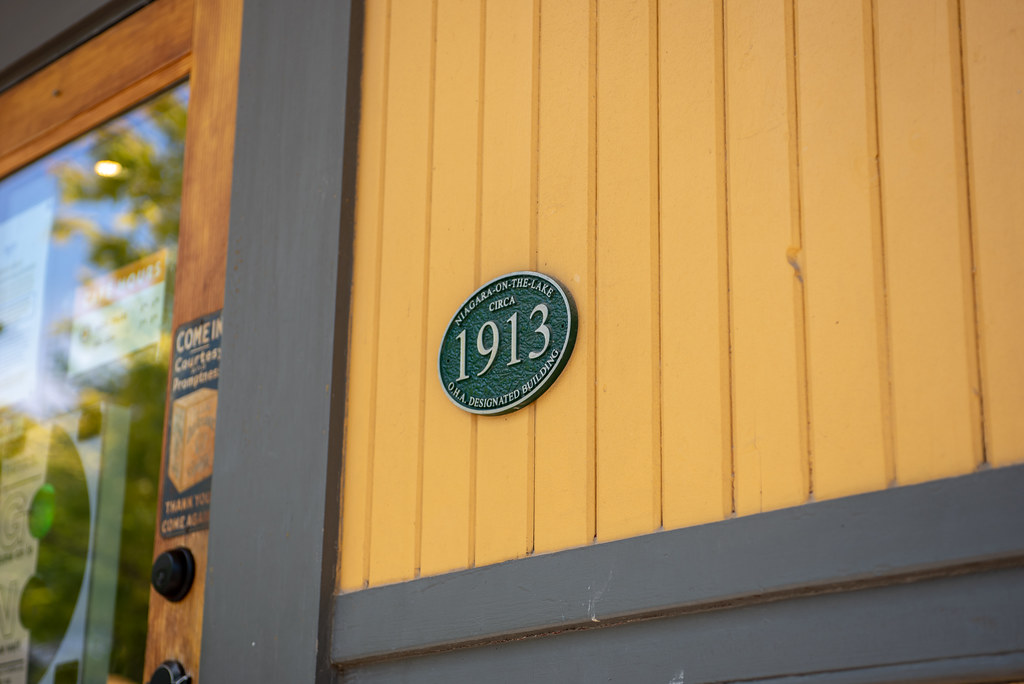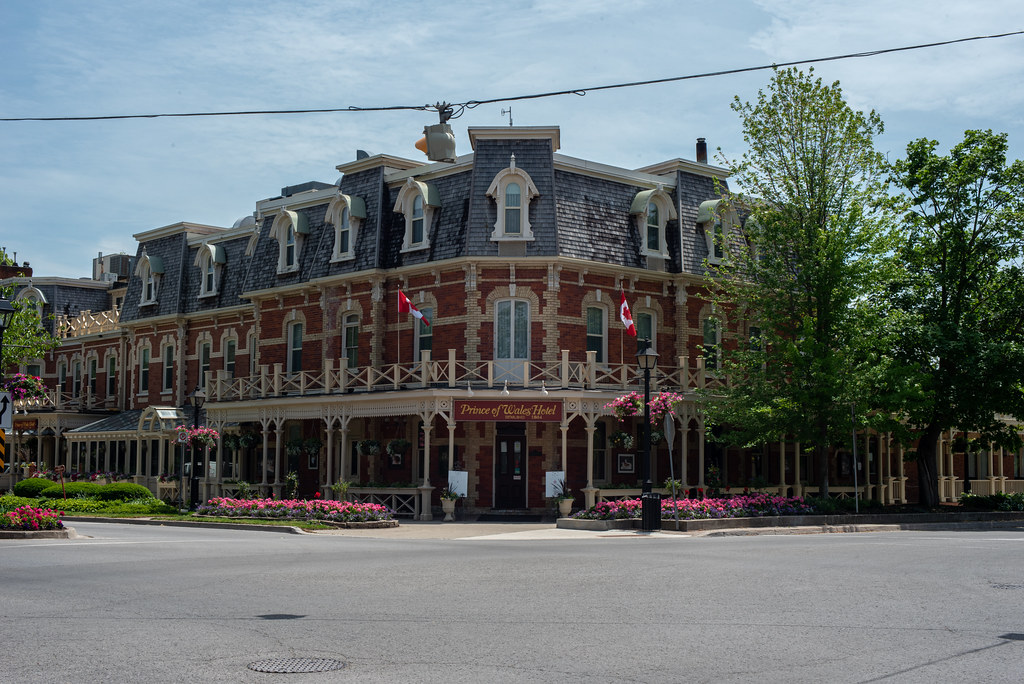But the town’s position as a tourist destination is relatively recent in the region’s history. While the history of Niagara-On-The-Lake reaches back to the original European settlement of Upper Canada, its connection to the railway also dates back to the early days of the railroad in Ontario. And that is no more shown by a strange-looking coffee shop a little bit off the main street.

Graflex Crown Graphic – Nikon Nikkor-W 1:5.6/180 – Ilford HP5+ @ ASA-200 – Pyrocat-HD (1+1+100) 9:00 @ 20C
The presence of the Welland Canal had helped intertwine the communities of the Niagara Region. The growth of agriculture and industry combined with marine traffic had created a network of urban communities. A means to move people quickly between their homes and employment came in the form of interurban railways. Since the late 1880s, the primary means of driving these interurban railways was electricity rather than steam. The reason is the abundant hydroelectric generation source from the Second Welland Canal, which had been relegated to small regional canals and electrical generation after the Third Canal opened. In 1899 a group of American investors purchased a series of small and nearly bankrupt interurban lines and combined them into the Niagara, St. Catharines & Toronto Railway. By 1908 the operator returned to Canadian ownership when noted investors and railway developers William Mackenzie and Donald Mann. Both were the men behind the growing Canadian Northern Railway making a bid at building another transcontinental railway. Mackenzie and Mann envisioned extending the line out to Hamilton and Toronto using hydro right-of-ways to lay their tracks with the blessing of Adam Beck. He had been promoting the use of electricity to drive railways. However, this plan never materialised. But the line did continue to expand. By the end of the first decade of the 20th Century, it served much of the Niagara Region. Lines running along with the significant communities of the Welland Canal with branches out to Niagara Falls and the Short Hills Region.

Nikon D750 – AF-S Nikkor 28-70mm 1:2.8D
Nikon D750 – AF-S Nikkor 28-70mm 1:2.8D
By 1913 the newest branch line opened, which served communities between St. Catharines and Niagara-On-The-Lake, allowing for passenger and freight services and banked on increased local and tourist traffic. The arrival of the new line was not the first time the railroad had arrived in Niagara-On-The-Lake. The new line ran parallel to the Ontario & Erie Railway line, establishing a small turntable and dock at the river’s edge in 1854. Niagara, St. Catharines & Toronto would construct their passenger station on King Street at the terminus of their line. The station followed the popular Queen Anne Revival style and was built from wood using a board and batten technique. The station was a small, simple design with a general waiting room, baggage room and a station master’s office with a ticket window and telegrapher bay—fine tiled floors with high wooden wainscoting, a single stove to proved heat in the winter. The increase in traffic allowed the operator to purchase 130 new cars for their interurban fleet. Of course, by 1918, Canadian Northern had been absorbed and assigned to manage Canadian Government Railways, which in 1923 became Canadian National Railways. Under Canadian National, all interurban lines that were absorbed were spun off into a separate corporate entity, Canadian National Electric Railway. But the age of the interurban was starting to come to a close with the introduction and availability, especially among the wealthy of personal automobiles and improvements to roads through Ontario. The market crash of 1929 saw Canadian National contract much of its operations, and one of the first lines was that of St. Catharines to Niagara-On-The-Lake, with passenger services ceasing in 1931. However, the old station remained in railway operations to continue using the line for freight services. There’s a good chance the station received its railroad red paint job in the 1950s. But by 1957, the entire network stopped operations, and Canadian National Electric Railways was reabsorbed into Canadian National. Niagara, St. Catharines & Toronto being the last interurban line to cease operations in Ontario.

Nikon D750 – AF-S Nikkor 28-70mm 1:2.8D
Nikon D750 – AF Nikkor 50mm 1:1.4D
As tourism became the primary economic driver of Niagara-On-The-Lake, the old interurban station did not remain vacant for long as Canadian National had pulled up the tracks and allowed King Street to remain primarily for automobile and pedestrian traffic the station would become a commercial building. While I’m unsure when the first shop opened, the owners would retain the red railroad and raise the station to construct a basement underneath. By the 1980s, the original windows and doors had been replaced with modern fixtures, and a Candy shoppe occupied the structure for much of the late 20th Century. In 2010 a new owner acquired the building; rather than allow it to remain in a modern form, they took it upon themselves to restore the building to as close to the 1913 appearance as they could. The doors and windows were replaced with modern replicas, the exterior repainted to match the Niagara, St. Catharines & Toronto livery, and the interior refurbished. The effort took two years, but in 2012 the old station reopened as a Balzac’s Coffee Shop. While there is little left of the Niagara, St. Catharines & Toronto Railway, not even the Halton Radial Railway Museum has rolling stock from the line. All the tracks have been pulled up, the Niagara-On-The-Lake station plus minor surviving artefacts recount this once primary transportation method in the region. And Balzac’s serves both excellent coffee and treats and is well worth a stop to admire the restoration effort that went into the station.